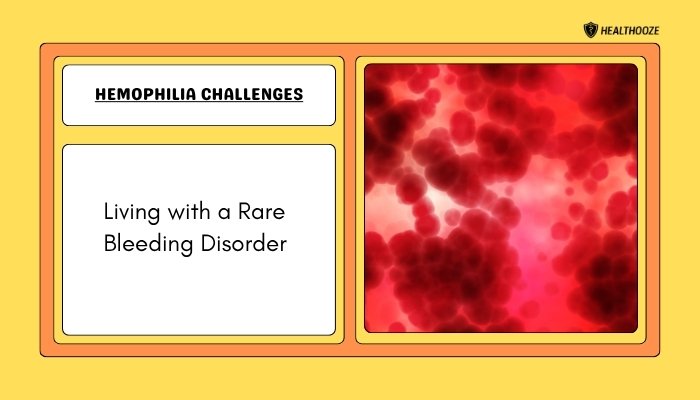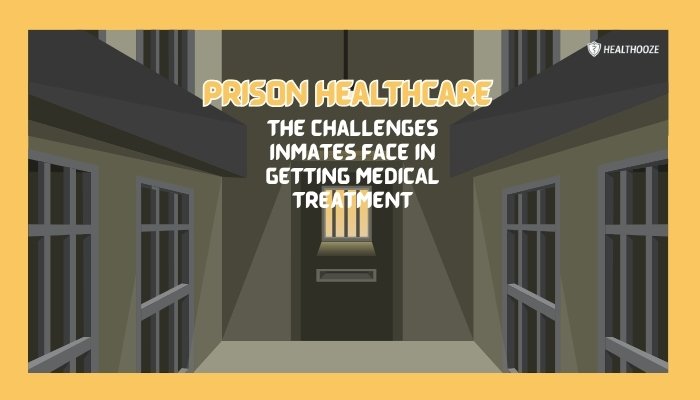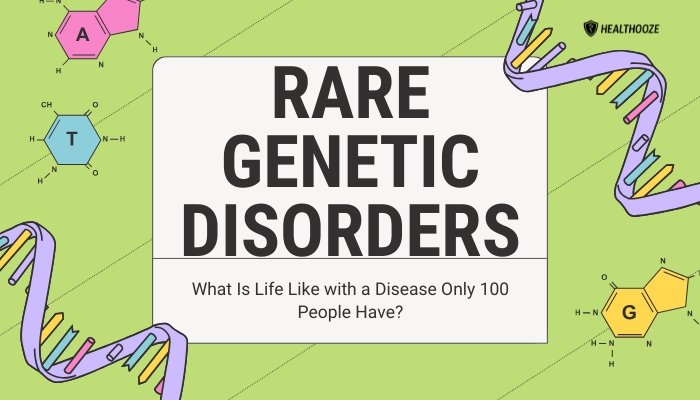Introduction
Hemophilia is a rare genetic condition that impairs the blood’s ability to clot, leading to prolonged or spontaneous bleeding.
While most often seen in males due to X-linked inheritance, females can also be symptomatic carriers in rarer cases. Advances in medicine now allow many with hemophilia to lead active lives, yet they must meticulously manage bleeding risks, endure frequent injections or infusions, and navigate emotional and social challenges.
This article explores hemophilia’s different forms, highlights the daily realities for those affected, and showcases how research continues to transform care.
What Is Hemophilia?
Genetic and Molecular Basis
Hemophilia arises from mutations in genes responsible for producing clotting factors—particularly factor VIII (Hemophilia A) or factor IX (Hemophilia B). These proteins normally collaborate in a cascade that stops bleeding when tissues or blood vessels are damaged. In hemophilia, a shortage or malfunction of these factors weakens clots, causing bleeding episodes that can be severe or prolonged.
Types of Hemophilia
- Hemophilia A: Deficiency of factor VIII, accounting for about 80% of hemophilia cases.
- Hemophilia B: Deficiency of factor IX (sometimes called “Christmas disease”).
- Severity Levels: Based on how much clotting factor is present or active. Mild forms might only surface during surgeries or major injuries, whereas severe forms trigger spontaneous or frequent bleeding episodes with minimal trauma.
Who’s Affected?
Hemophilia predominantly appears in males since the gene resides on the X chromosome. Women typically have two X chromosomes; having one functional X often spares them from severe symptoms, though female carriers can experience mild bleeding or “carriers with clotting factor deficiency.” The condition typically runs in families, but new mutations can spontaneously occur.
Symptoms and Complications
Bleeding Episodes
- Joint Bleeds: Recurrent hemorrhages into joints like knees, elbows, and ankles can lead to chronic swelling, pain, and eventual joint damage (hemophilic arthropathy).
- Muscle Bleeds: Intramuscular bleeding can cause compartment syndrome or nerve compression.
- Mucosal and Oral Bleeds: Gums, nose, or internal organs might bleed with little provocation.
Prolonged or Spontaneous Hemorrhage
- Post-Injury Bleeding: Simple cuts or bruises can bleed longer than usual.
- Internal Organ Bleeds: Rare but life-threatening if unchecked, e.g., head trauma can lead to intracranial hemorrhage.
- Menstruation: For female carriers, heavy menstrual bleeding or postpartum hemorrhages might occur if factor levels are low.
Impact on Daily Life
- Activity Restrictions: High-impact sports or jobs with physical strain become risky without precautionary measures.
- Chronic Pain: Frequent bleeds can cause lingering joint pain and reduce mobility.
- Mental Health Stress: The fear of spontaneous bleeds or the burden of routine factor infusions can weigh on emotional well-being.
Treatment and Management
Factor Replacement Therapy
- Concentrates
- Plasma-Derived: Processed from donated blood, containing the missing factor.
- Recombinant Products: Lab-engineered factor proteins that reduce infection risk and ensure consistent potency.
- Prophylaxis vs. On-Demand
- Prophylactic Regimens: Regular infusions of clotting factor to prevent bleeding episodes, standard for severe hemophilia.
- On-Demand: Factor given to treat active bleeds, used in milder cases or resource-limited settings.
Extended Half-Life Therapies
Recent generation factor products remain in circulation longer, requiring fewer infusions. This is especially beneficial for children, helping them maintain normal daily activities with minimal bleeds.
Non-Factor Treatments
- Emicizumab: A bispecific monoclonal antibody that mimics factor VIII function, reducing bleed frequency for Hemophilia A patients, including those with inhibitors.
- Gene Therapy: Emerging clinical trials use viral vectors to deliver functional factor VIII or IX genes, offering the potential for a one-time or limited series of treatments that significantly reduce or end the need for ongoing infusions.
Ancillary Supports
- Physiotherapy: Strengthening muscles around vulnerable joints, plus consistent range-of-motion exercises to stave off arthropathy.
- Pain Management: Use of NSAIDs or other analgesics with caution to avoid exacerbating bleeding.
- Preventive Dentistry: Minimizing gum bleeding or post-procedural complications with prophylactic factor therapy.
Psychosocial and Community Dimensions
Family and Caregiver Roles
From infancy, children with severe hemophilia rely on caregivers for factor infusions and monitoring. Parents might be anxious about minor bumps or potential hidden internal bleeds. Education for parents—about identifying early bleed signs and administering factor—empowers them to handle emergencies swiftly.
School and Workplace Adaptations
- Education for Staff: Teachers, coaches, or employers benefit from awareness of hemophilia’s nature and the necessary first aid steps if a bleed occurs.
- Adapted Activities: Some contact sports or physically demanding jobs might be risky. However, with prophylaxis, many can still safely participate in moderate exercise or non-strenuous activities.
Social Stigma
Although lesser than in past generations, misunderstandings can persist. Some may assume it’s “just a bleeding problem” and not appreciate the danger of internal bleeds. Others with severe disease fear disclosing it, worried about discrimination or pity.
Advances and Ongoing Challenges
Improved Therapies, Higher Costs
Innovations like extended half-life factors and gene therapy show transformative potential but remain expensive. Access disparities persist, especially in lower-income countries where factor supply is limited or absent.
Resource Allocation and Advocacy
Global NGOs, such as the World Federation of Hemophilia, push for universal access to safe factor replacement, forging alliances with governments. National patient organizations raise public awareness and coordinate donation programs.
Toward a Functional Cure
- Gene Editing: CRISPR-based approaches or lentiviral gene therapy could correct the defective gene.
- Encouraging Results: Some participants in trials have reduced or stopped factor infusions for months to years, though long-term safety data are still emerging.
Practical Advice for Living with Hemophilia
Routine Checkups
- Coagulation Clinics: Regular visits ensure prophylaxis dosage adjustments, monitor for inhibitors (antibodies neutralizing factor), and track joint health.
- Bone and Joint Assessments: Early detection of arthritic changes or instability helps prevent permanent disability.
Build a Support System
- Peer Groups: Connect with local or online communities, share experiences about coping strategies or new treatments.
- Mental Health: Chronic anxiety over bleeds or caretaker stress can be mitigated through counseling or support networks.
Preparedness for Emergencies
- Self-Infusion Skills: Many with hemophilia learn to administer factor at home, greatly reducing ER trips.
- Medical Alert ID: Indicating hemophilia status ensures quick, appropriate treatment in accidents.
- Close Collaboration with Dentists: Minimizing bleeding risk during extractions or surgeries via prophylactic factor infusions.
Conclusion
Hemophilia is no longer the “untreatable bleeding disease” it once was. Thanks to breakthroughs in factor therapies, prophylactic regimens, and early interventions, individuals with hemophilia can live robust lives—pursuing education, careers, and personal ambitions. Yet, deep-rooted challenges remain, including high-cost treatments, limited availability in resource-poor settings, and ongoing medical complexities like inhibitor development. As new gene therapies come to fruition, there is real hope that hemophilia could transform from a lifelong condition requiring daily vigilance into a more manageable or possibly curable state. By integrating scientific progress with community support and broader healthcare access, the next generation of patients with hemophilia can look forward to even greater independence and well-being.
References
- Peyvandi F, Garagiola I, Young G. The past and future of haemophilia: diagnosis, treatments, and its complications. Lancet. 2016.
- Srivastava A, Brewer AK, Mauser-Bunschoten EP, et al. WFH guidelines for the management of hemophilia. Haemophilia. 2020.
- Pierce GF, Coffin D, Johnson KW, et al. Gene therapy for hemophilia. J Thromb Haemost. 2019.
- Soucie JM, Miller CH, Kelly FM, et al. A population-based study of hemophilia in men. Am J Hematol. 2015.







